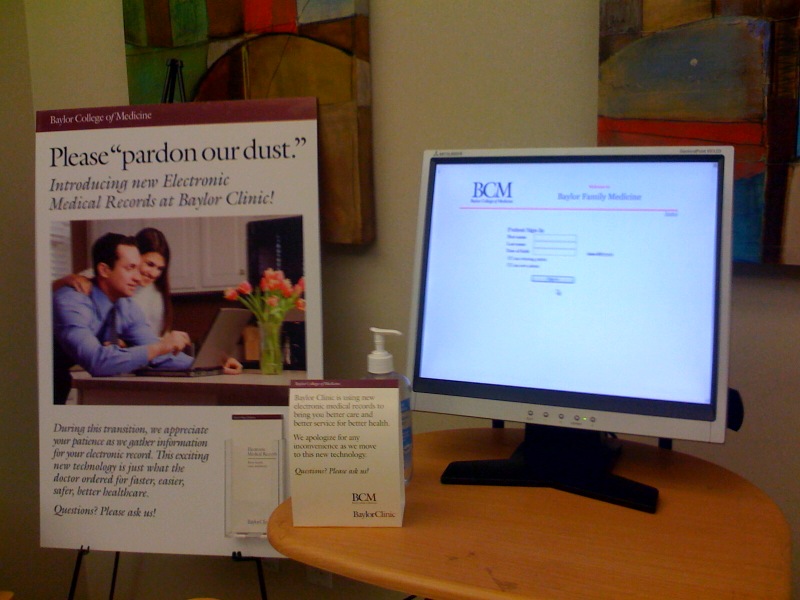Like anyone following the President's policy proposals, I have heard touted the benefits of electronic medical records and am aware that stimulus funds are dedicated to getting these systems in place. Yet, I was still a bit surprised this week when I visited my doctor's office and learned that they were already in the middle of implementing an electronic medical record system. (Of course, I could have guessed as much since the process of setting up an appointment was a little more complicated than usual, which was explained by the all-telling comment: "We have a new system.")
As I would have hoped, electronic medical records seemed to make my check-in process quicker. The receptionist was able to catch mistakes that I made. For example, although I was describing myself as a new patient (since I had never seen this doctor), I was not new to the practice (and so had records to be linked to). Also my new doctor quickly noticed that I hadn't had blood work in years prompting him to order some. And as I feared, this innovation raised privacy concerns among many who I told about my initial experience.
But mostly, I was surprised by many aspects of this first experience with electronic medical records, although in retrospect, many things seem quick obvious. For example:
1. The patient does a lot of the typing. I checked in on a kiosk in the lobby and then later was ushered back to a private cubicle with a computer where I entered in my symptoms etc.
2. Sick patients typing on the same keyboard = germs. My doctor's office tackles this problem by providing bottles of purell at each station, as well as a gell-like, spongy, material that covers the keyboard (and makes it a little hard to type).
3. The receptionist takes your picture on small desktop cams that I don't expect to see in a doctor's office. (This was the feature that raised the hackles of my libertarian friends.)
4. In the exam rooms, the doctor can swing the computer over so that you can both review test results, notes from earlier sessions, vital signs etc. This was very helpful.
5. And finally, I hadn't considered that it can take a really long time for a doctor, who rarely typed before as a part of this job, to type in the facts you are telling him. For someone who types quickly, this can be a little excruciating to witness.
Of course, there are still a few glitches in the system I experienced. In addition to the scheduling problems noted above, I was given a paper form to take to the lab for lab work. I have placed it somewhere safe, but it would be nice to have the specific doctor's request in my electronic record as well. In addition, during my visit the nurse still asked me what medication I was taking; and she did not think it was funny when I answered, "The same medication that I just entered into the computer."
But, in general, I was really impressed with the electronic medical record system and, along with our president, have high hopes for increased health care efficiency and reduced cost as a result of this initiative.
